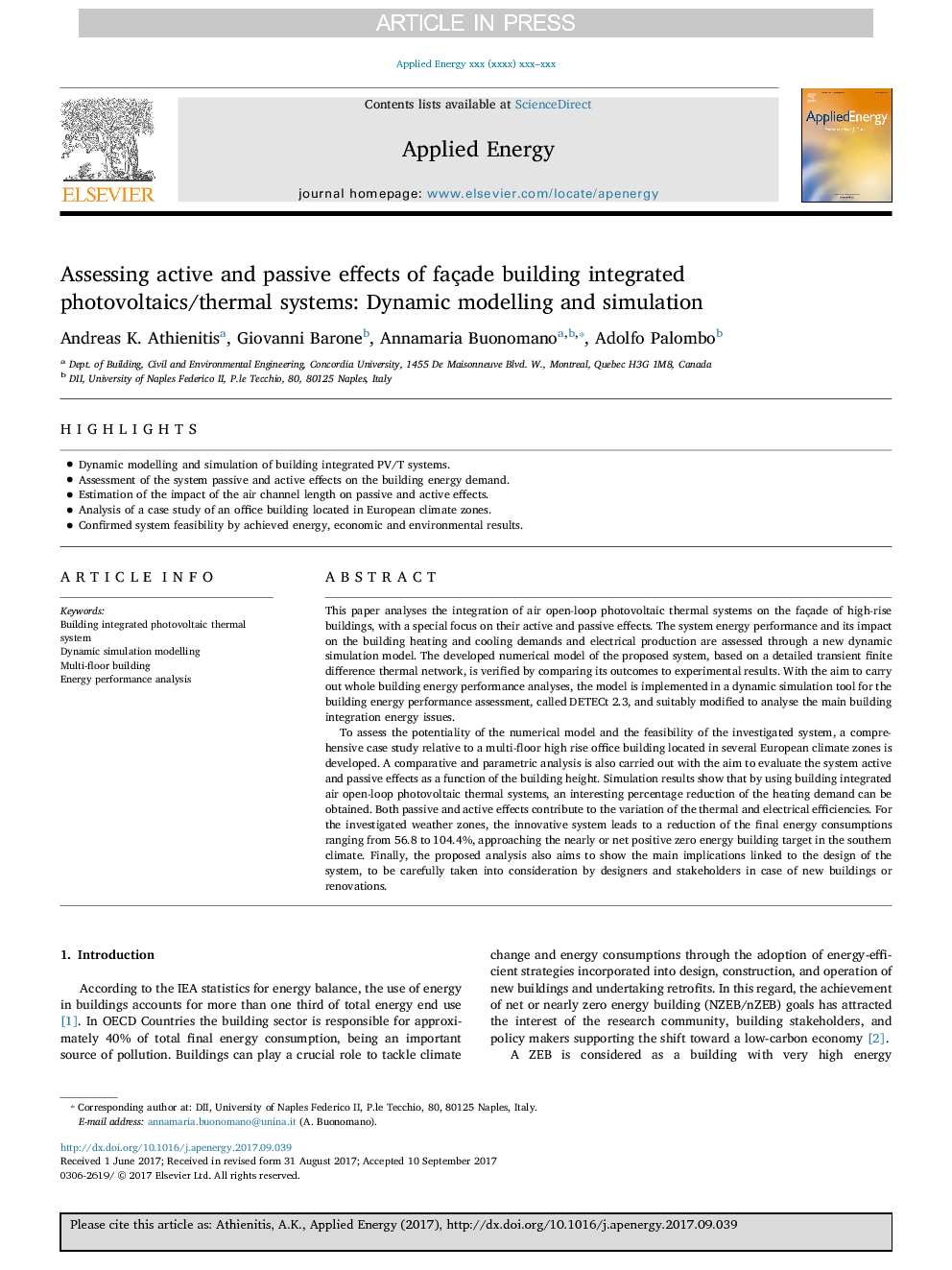ترجمه فارسی عنوان مقاله
ارزیابی اثرات فعال و غیرفعال ساختارهای فتوولتائیک / حرارتی یکپارچه ساخت و ساز: ساخت و مدل سازی پویا و شبیه سازی
عنوان انگلیسی
Assessing active and passive effects of façade building integrated photovoltaics/thermal systems: Dynamic modelling and simulation
| کد مقاله | سال انتشار | تعداد صفحات مقاله انگلیسی |
|---|---|---|
| 96055 | 2018 | 28 صفحه PDF |
منبع

Publisher : Elsevier - Science Direct (الزویر - ساینس دایرکت)
Journal : Applied Energy, Volume 209, 1 January 2018, Pages 355-382
ترجمه کلمات کلیدی
ساخت یک سیستم حرارتی فتوولتائیک یکپارچه، مدل سازی شبیه سازی دینامیک، ساختمان چند طبقه، تجزیه و تحلیل عملکرد،
کلمات کلیدی انگلیسی
Building integrated photovoltaic thermal system; Dynamic simulation modelling; Multi-floor building; Energy performance analysis;
ترجمه چکیده
برای ارزیابی توان بالقوه مدل عددی و امکان سنجی سیستم تحقیقاتی، مطالعه موردی جامع نسبت به یک ساختمان چند طبقه طبقه بالا در چندین منطقه آب و هوایی اروپا توسعه یافته است. تجزیه و تحلیل تطبیقی و پارامتری با هدف بررسی اثرات فعال و غیرفعال سیستم به عنوان عملکرد ارتفاع ساختمان انجام شده است. نتایج شبیه سازی نشان می دهد که با استفاده از سیستم های حرارتی فتوولتائیک مجتمع هوای مجتمع ساختمان، درصد کاهش جالب تقاضای حرارت را می توان به دست آورد. هر دو اثر منفعل و فعال به تغییرات راندمان حرارتی و الکتریکی کمک می کند. برای مناطق ناشناخته آب و هوایی، سیستم نوآورانه منجر به کاهش مصرف انرژی نهایی می شود که از 56.8 به 104.4 درصد می رسد و نزدیک به نزدیک یا مثبت انرژی مثبت انرژی خورشیدی در آب و هوای جنوبی قرار دارد. در نهایت، تجزیه و تحلیل پیشنهادی نیز با هدف نشان دادن پیامدهای اصلی مرتبط با طراحی سیستم است که با توجه به طراحی طراحان و ذینفعان در مورد ساختمان های جدید و یا بازسازی ها به دقت مورد توجه قرار گیرد.

